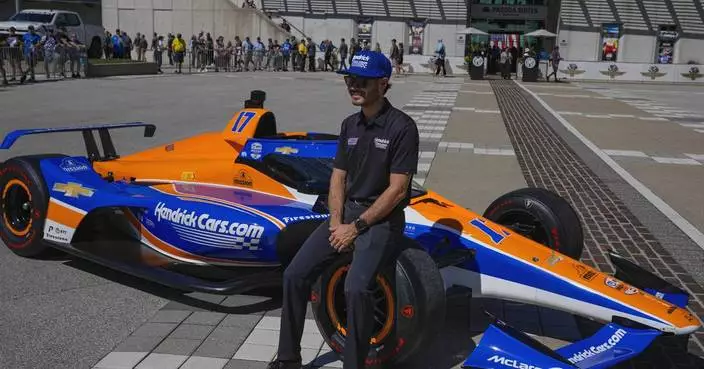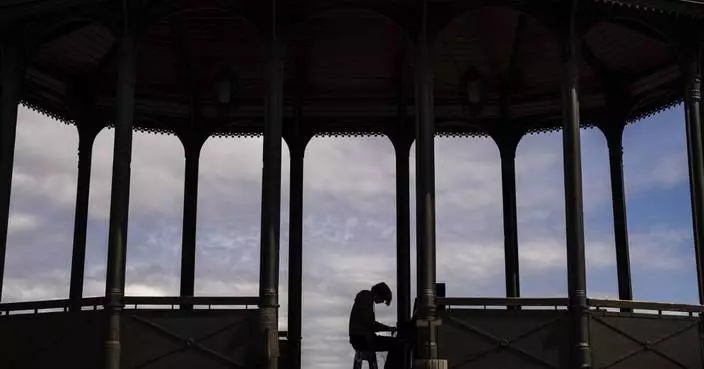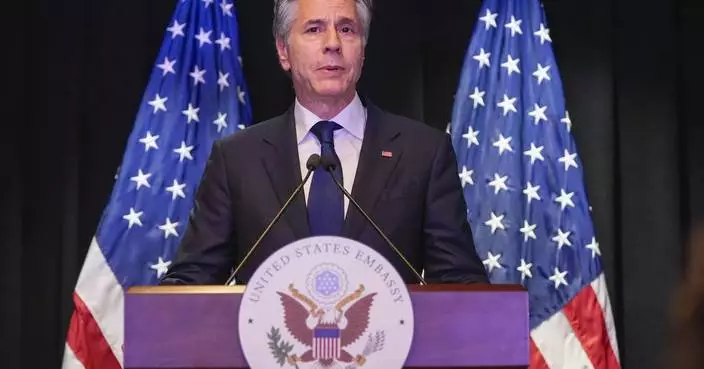The men who fought on D-Day, June 6, 1944, are now in their 90s or 100s, wrinkled and often moving with the help of a cane or wheelchair. Their hands often tremble and their voices shake as they labor to speak. But 75 years ago they were young men, many in their teens, preparing to go to war. All muscle after months of rigorous training, they clambered down precarious rope ladders into landing craft or climbed into planes, parachutes strapped to their backs.
They faced a determined German opposition dug into pillboxes and holding the high ground.
Click to Gallery
World War II and D-Day veteran Charles Norman Shay, from Indian Island, Maine, poses on a dune at Omaha Beach in Saint-Laurent-sur-Mer, Normandy, France, May 1, 2019. Shay was a combat medic on D-Day, assigned to an assault battalion in the first wave of attacks on D-Day, June 6, 1944. (AP PhotoVirginia Mayo)
The men who fought on D-Day, June 6, 1944, are now in their 90s or 100s, wrinkled and often moving with the help of a cane or wheelchair. Their hands often tremble and their voices shake as they labor to speak. But 75 years ago they were young men, many in their teens, preparing to go to war. All muscle after months of rigorous training, they clambered down precarious rope ladders into landing craft or climbed into planes, parachutes strapped to their backs.
The Associated Press captured images of D-Day veterans from the United States, Great Britain, Canada and Germany who are returning to Normandy for the 75th anniversary. For some. it will be their first time since they fought there. Others have made repeated pilgrimages to the sandy beaches. They will remember the choppy waters lapping at the ships, the flash of the tracer bullets, the roar of the artillery, and they'll say a prayer for those who did not make it back.
British D-Day veteran Leonard 'Ted' Emmings, who was a naval Coxswain serving on a small landing craft which landed 36 Canadians on Juno beach in France, poses for photographs backdropped by the map used to plan the Normandy D-Day landings at Southwick House near Portsmouth, England, May 9, 2019. Southwick House was the forward headquarters of the allied forces preparing for the invasion of Normandy in 1944, the nerve center of D-Day. (AP PhotoMatt Dunham)
In this photo taken April 29, 2019, D-Day veteran Jake Larson poses before going for a ride in the "The Spirit of Benovia" World War II-era aircraft in Oakland, Calif. Both Larson and the former C-53 Skytrooper transport plane plan to be in Normandy, France and take part in events for the 75th anniversary of D-Day. The plane takes its name after a winery in Sonoma County. (AP PhotoEric Risberg)
Steve Melnikoff who came ashore Normandy, France on D-Day with the 175th Regiment of the 29th Infantry Division, sits in his home in Cockeysville, Md., on May 21, 2019. His unit was part of the bloody campaign to capture the French town of Saint-Lo through fields marked by thick hedgerows that provided perfect cover for German troops. (AP PhotoSteve Ruark)
German D-Day veteran Paul Golz poses for a photo at his home in Koenigswinter, Germany, after an interview with The Associated Press on May 17, 2019. Golz and his comrades were taken prisoner by an American patrol on June 9, 1944, three days after the Allied landing. (AP PhotoMartin Meissner)
In this photo taken May 20, 2019, veteran Norman Harold Kirby sits with a photo of his mother, Katherine Louise Kirby, and himself, at 17, and a post-war portrait as he poses for a photo at his home in Lions Bay, Canada. The Canadian from British Columbia had joined the army when he was only 17 and was barely a 19-year-old private when he climbed into the landing craft that would take him to shore on June 6, 1944. (AP PhotoElaine Thompson)
World War II and D-Day veteran Charles Norman Shay, from Indian Island, Maine, poses on a dune at Omaha Beach in Saint-Laurent-sur-Mer, Normandy, France, May 1, 2019. Shay was a combat medic on D-Day, assigned to an assault battalion in the first wave of attacks on D-Day, June 6, 1944. (AP PhotoVirginia Mayo)
Scared? Of course. Many had never seen combat. But they were also determined to do their jobs and perhaps more importantly to them, not let down the man, the buddy, the friend fighting beside them.
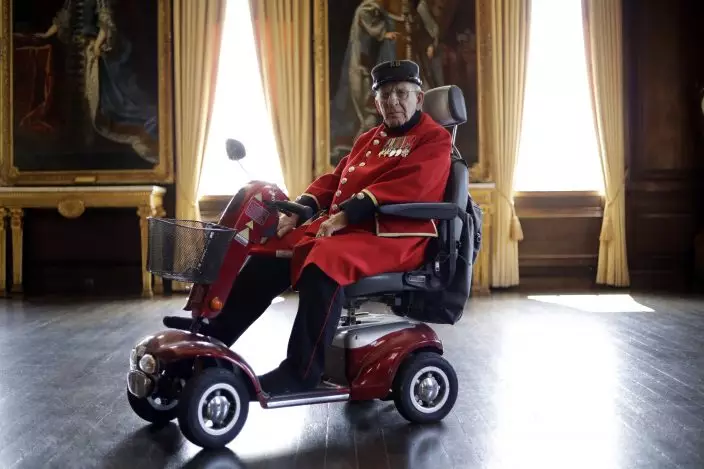
British Chelsea Pensioner and D-Day veteran Frank Mouque poses for a portrait during a D-Day 75th anniversary event in the State Apartments at the Royal Hospital Chelsea in London, May 13, 2019. Mouque, who can't hear well now and answered media questions by reading them from a piece of paper, was a Sapper and Corporal in the British Royal Engineers. On D-Day he landed on Sword beach and carried with him 21 pounds of explosives to blow down telegraph poles. (AP PhotoMatt Dunham)
The Associated Press captured images of D-Day veterans from the United States, Great Britain, Canada and Germany who are returning to Normandy for the 75th anniversary. For some. it will be their first time since they fought there. Others have made repeated pilgrimages to the sandy beaches. They will remember the choppy waters lapping at the ships, the flash of the tracer bullets, the roar of the artillery, and they'll say a prayer for those who did not make it back.
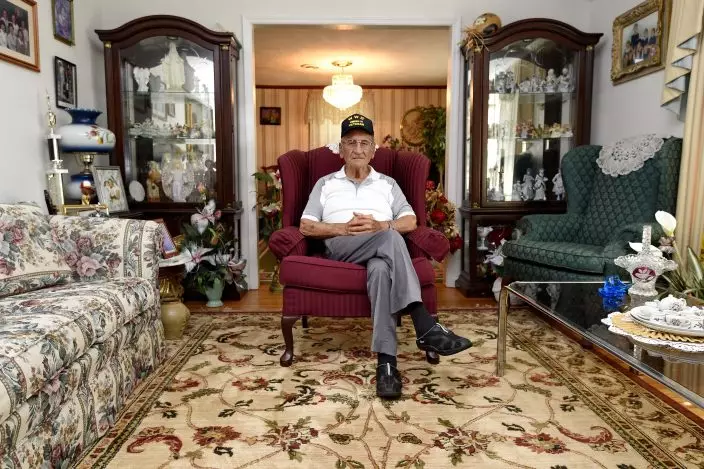
Dennis Trudeau, a World War II veteran who landed in Normandy on D-Day, poses for a photo at his home May, 21, 2019, in Grovetown, Ga. Trudeau had joined the Canadian military at 17 and became a paratrooper in part because they paid an extra $50 a month. (AP PhotoRichard Shiro)
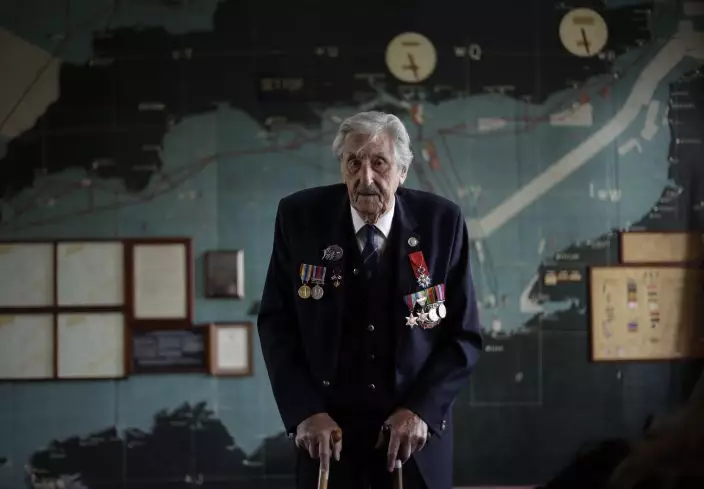
British D-Day veteran Leonard 'Ted' Emmings, who was a naval Coxswain serving on a small landing craft which landed 36 Canadians on Juno beach in France, poses for photographs backdropped by the map used to plan the Normandy D-Day landings at Southwick House near Portsmouth, England, May 9, 2019. Southwick House was the forward headquarters of the allied forces preparing for the invasion of Normandy in 1944, the nerve center of D-Day. (AP PhotoMatt Dunham)
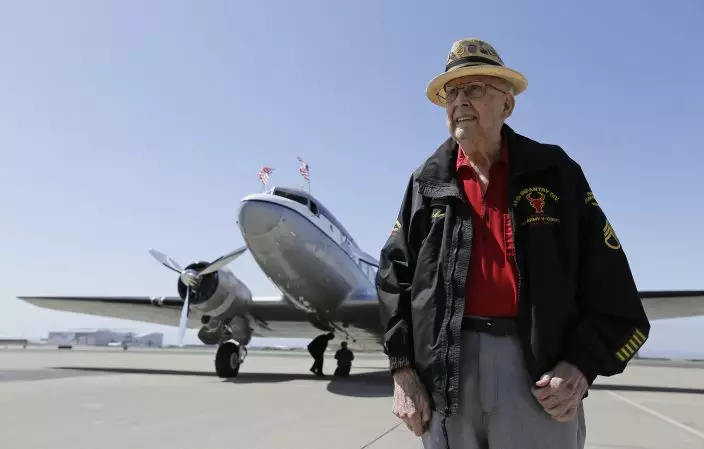
In this photo taken April 29, 2019, D-Day veteran Jake Larson poses before going for a ride in the "The Spirit of Benovia" World War II-era aircraft in Oakland, Calif. Both Larson and the former C-53 Skytrooper transport plane plan to be in Normandy, France and take part in events for the 75th anniversary of D-Day. The plane takes its name after a winery in Sonoma County. (AP PhotoEric Risberg)
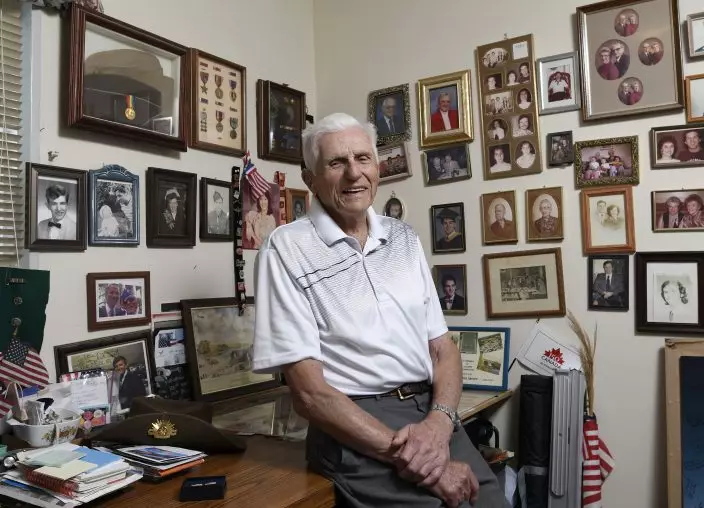
Steve Melnikoff who came ashore Normandy, France on D-Day with the 175th Regiment of the 29th Infantry Division, sits in his home in Cockeysville, Md., on May 21, 2019. His unit was part of the bloody campaign to capture the French town of Saint-Lo through fields marked by thick hedgerows that provided perfect cover for German troops. (AP PhotoSteve Ruark)

German D-Day veteran Paul Golz poses for a photo at his home in Koenigswinter, Germany, after an interview with The Associated Press on May 17, 2019. Golz and his comrades were taken prisoner by an American patrol on June 9, 1944, three days after the Allied landing. (AP PhotoMartin Meissner)
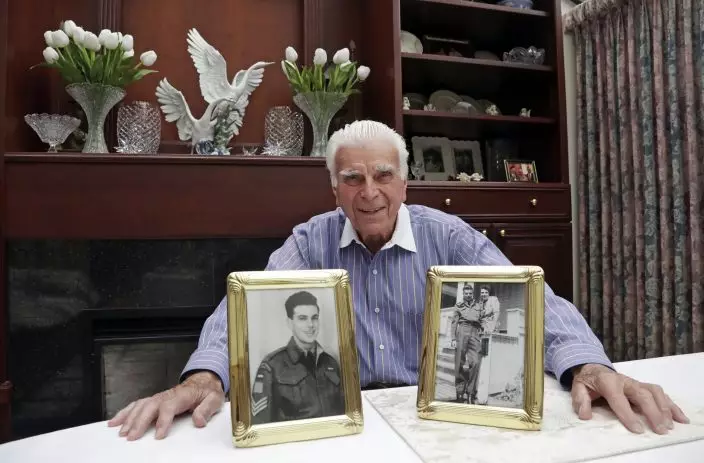
In this photo taken May 20, 2019, veteran Norman Harold Kirby sits with a photo of his mother, Katherine Louise Kirby, and himself, at 17, and a post-war portrait as he poses for a photo at his home in Lions Bay, Canada. The Canadian from British Columbia had joined the army when he was only 17 and was barely a 19-year-old private when he climbed into the landing craft that would take him to shore on June 6, 1944. (AP PhotoElaine Thompson)
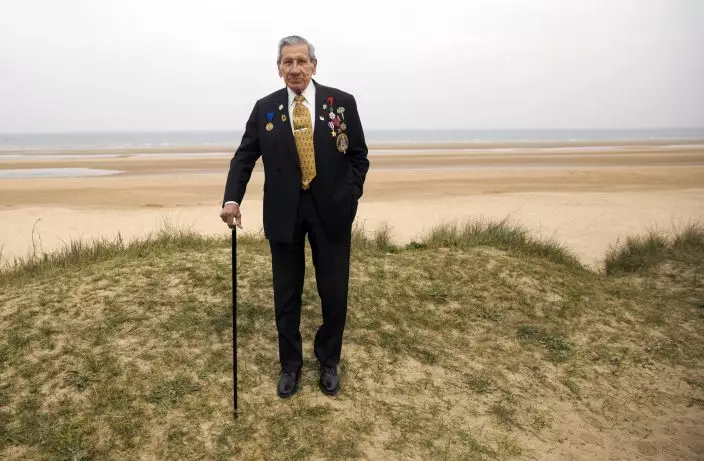
World War II and D-Day veteran Charles Norman Shay, from Indian Island, Maine, poses on a dune at Omaha Beach in Saint-Laurent-sur-Mer, Normandy, France, May 1, 2019. Shay was a combat medic on D-Day, assigned to an assault battalion in the first wave of attacks on D-Day, June 6, 1944. (AP PhotoVirginia Mayo)
WASHINGTON (AP) — U.S. intelligence officials have determined that Russian President Vladimir Putin likely didn’t order the death of imprisoned opposition leader Alexei Navalny in February, according to an official familiar with the determination.
While U.S. officials believe Putin was ultimately responsible for the death of Navalny, who endured brutal conditions during his confinement, the intelligence community has found “no smoking gun” that Putin was aware of the timing of Navalny's death — which came soon before the Russian president's reelection — or directly ordered it, according to the official.
The official spoke on the condition of anonymity to discuss the sensitive matter.
Soon after Navalny’s death, U.S. President Joe Biden said Putin was ultimately responsible but did not accuse the Russian president of directly ordering it.
At the time, Biden said the U.S. did not know exactly what had happened to Navalny but that “there is no doubt” that his death “was the consequence of something that Putin and his thugs did.”
Navalny, 47, Russia’s best-known opposition politician and Putin’s most persistent foe, died Feb. 16 in a remote penal colony above the Arctic Circle while serving a 19-year sentence on extremism charges that he rejected as politically motivated.
He had been behind bars since January 2021 after returning to Russia from Germany, where he had been recovering from nerve-agent poisoning that he blamed on the Kremlin.
Russian officials have said only that Navalny died of natural causes and have vehemently denied involvement both in the poisoning and in his death.
In March, a month after Navalny’s death, Putin won a landslide reelection for a fifth term, an outcome that was never in doubt.
The Wall Street Journal first reported about the U.S. intelligence determination.
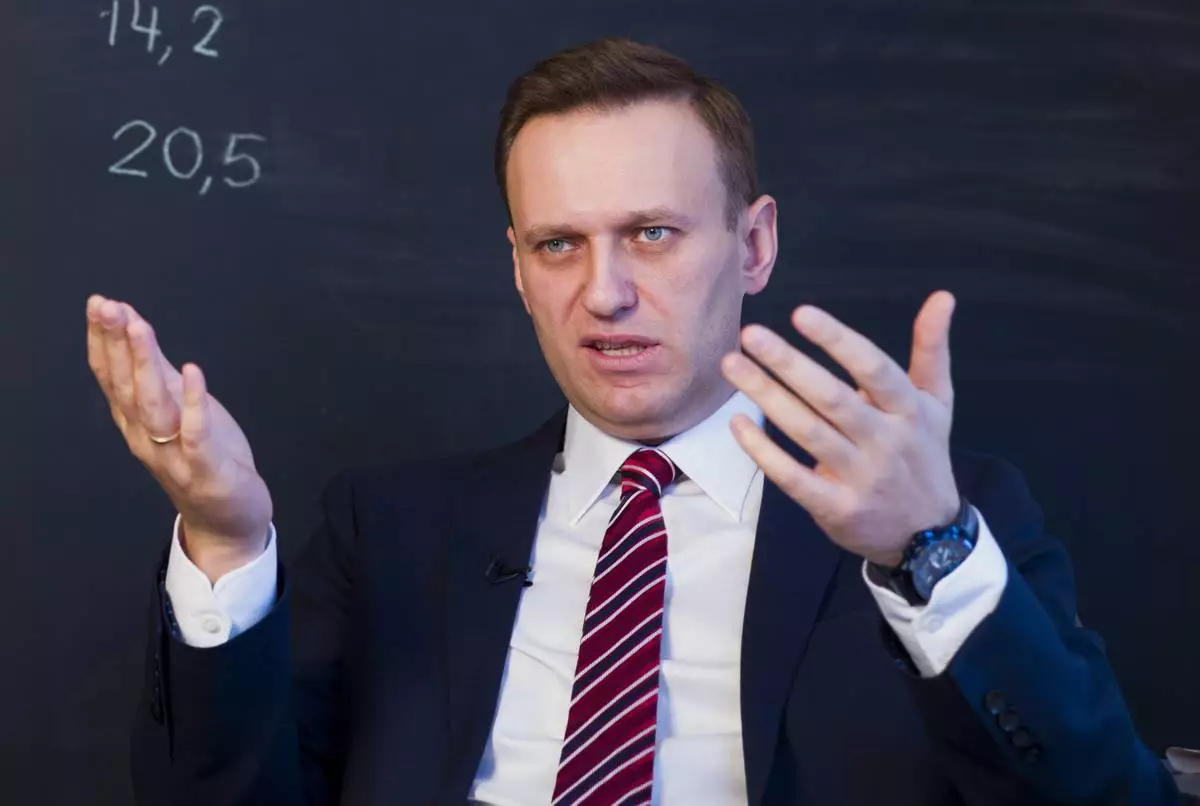
FILE - Russian opposition politician Alexei Navalny gestures while speaking during his interview to the Associated Press in Moscow, Russia on Dec. 18, 2017. U.S. intelligence officials have determined that Russian President Vladimir Putin likely didn't order the death of Navalny, the imprisoned opposition leader, in February of 2024. An official says the U.S. intelligence community has found "no smoking gun" that Putin was aware of the timing of Navalny's death or directly ordered it. (AP Photo/Alexander Zemlianichenko, File)













